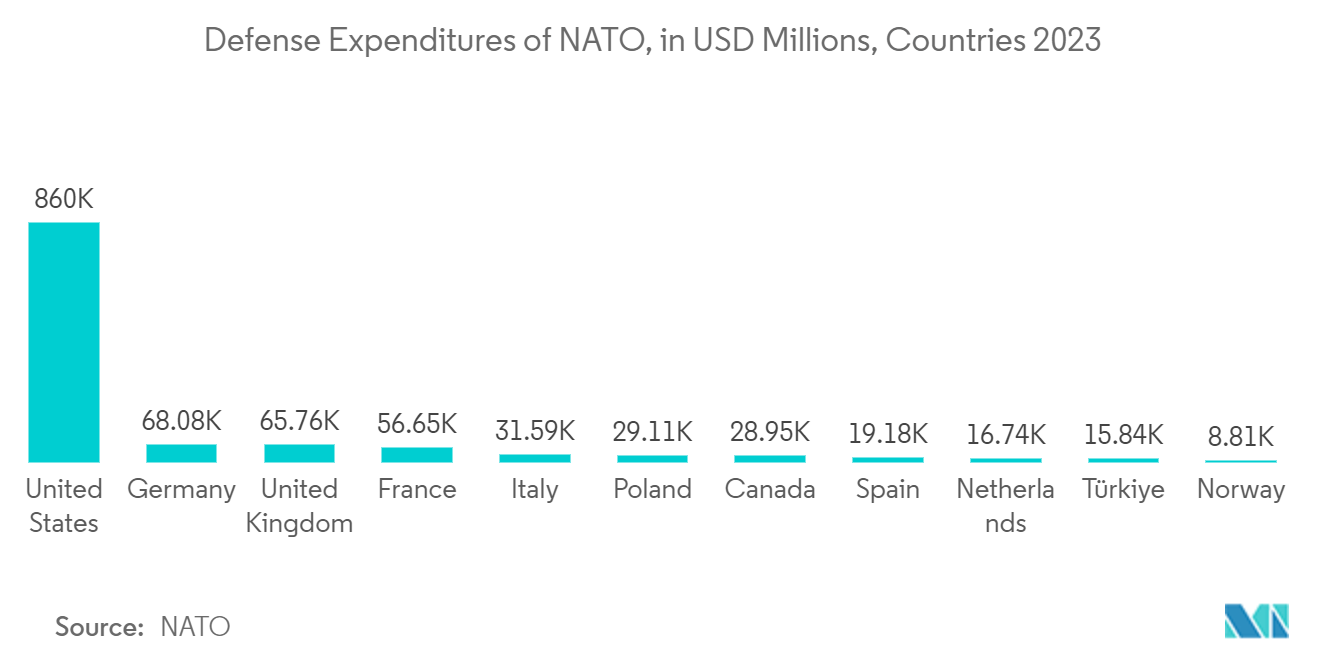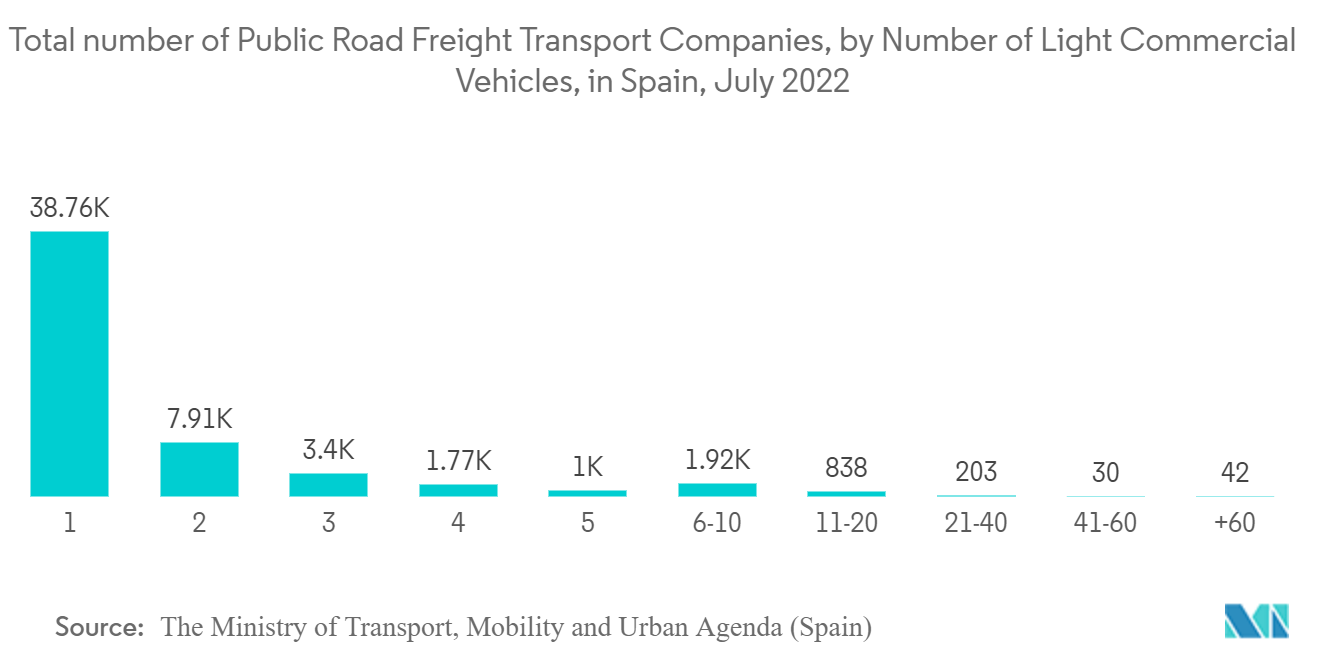Market Trends of Spain Satellite Imagery Services Industry
Surveillance and Security is Expected to Hold Significant Share
- Satellite imagery and GIS systems allow security and law enforcement agencies to identify hot spots and other trends and patterns for crime mapping. Accurate detection of spatial concentrations of crime and timely mapping of crime locations help law enforcement identify the concentration of crimes in space and time, thus, providing important information for crime reduction efforts. Such imagery helps provide efficiency and speed of analysis in this application area by allowing analysts to overlay other datasets, such as census demographics and locations of stores, banks, and schools. This helps security department administrators understand the underlying causes of crime and devise strategies. These strategies include allocating police officers and dispatching them to emergencies.
- However, there is an increase in demand for advanced remote sensing techniques, which can provide colour and panchromatic image processing services, along with the ability to sharpen the image with data fusion, enhancements, georeferencing, mosaicing, and colour/grayscale balancing. Furthermore, various prototype systems are being developed to detect and view crime hotspots in a web environment, using thematic layers overlaid on background data.
- Hotspot mapping techniques, such as choropleth mapping, grid mapping, spatial ellipse mapping, and kernel density mapping, are being implemented to map crime hotspots, predict future crime locations, and optimize crime reduction efforts. Satellite imaging allows alarm and video surveillance systems to be connected to security centres via satellite. Alarm messages and live video images can both be sent at the same time. The video images can be used for surveillance or alarm verification. Emergency voice conversations and remote control of devices such as cameras were made possible through bidirectional audio and internet-like data channels.
- Space democratization is already taking place. The development of space and satellite technology, as well as the availability of this technology to countries, organizations, and individuals, has accelerated in the twenty-first century. Due to technological advancements, large, expensive capabilities can now be housed on smaller, lighter, and less expensive platforms. The use of generated satellite images for various industries across diverse economic sectors, as well as a broad range of new applications, lower technology barriers, and the emergence of SMEs and startups in the imagery analytics market, brought a large-scale diversity to the market studied.
- According to NATO, in 2023, Spain's defence expenditure was estimated at USD 19,179 million. Such figures turned Spain into the country with the seventh highest defence expenditure among NATO members. Spain must embrace this democratization of space and shift away from large, expensive military-centric space platforms in favour of less expensive, more inventive technologies and better commercial options.

Transportation and Logistics is Expected to Hold Significant Share
- Transportation and logistics providers are one of the earliest adaptors of commercial satellite imagery. Almost all railway networks and public transportation systems worldwide utilize commercial satellite imaging data for monitoring and planning. Many logistics providers worldwide provide live tracking facilities as a value-added service to goods manufacturers to ensure positive consumer sentiment and minimal damage during transit. This trend has been rising, mainly due to increased activity in the global e-commerce industry. Furthermore, the increasing cross-border logistics and last-mile deliveries are creating a great need for transportation and logistics companies to plan routes before the departure of goods, to make the best of the live traffic, weather, and road conditions.
- Space data is currently being implemented in transport systems. For example, hazardous goods transported by unpowered assets were being tracked and monitored using satellite data, as it is extremely difficult to monitor them in real-time. Certain parameters are being monitored, ensuring safe and reliable journeys. Other areas include winter road maintenance and intelligent cargo monitoring. By utilizing satellite navigation and imaging technology, one can control winter maintenance without requiring manual intervention. Both these technologies can provide cost-effective ways of monitoring and controlling the supply chain of high-value containers.
- Advances in technology and the availability of geospatial information help transportation and logistics planners use data and analyze it more efficiently. Geospatial technology also helps logistics drivers visualize garage locations and fueling stations nearby. As transportation and logistics companies are looking for cost-effective solutions to optimize their fleet operations, geospatial information is helping them by providing information related to road conditions and traffic congestion. Moreover, newer remote sensing technologies, such as high-resolution satellite imagery, extract terrain elevations, create contour maps, and locate infrastructure assets like road centerlines, bridges, culverts, signs, and overpasses.
- According to the Ministry of Transport, Mobility and Urban Agenda (Spain), In July 2022, only 42 public companies in Spain had more than 60 authorized light commercial vehicles. In total, the number of public road freight transport companies with authorization to use this type of commercial vehicle amounted to approximately 55,900. Such a huge number of public transport vehicles in the region would create an opportunity for the studied market to grow.
- As the market continues to evolve, significant firms worldwide are increasingly relying on technologies such as machine learning and artificial intelligence (AI) to scan daily satellite imagery, detect and classify items, and track even minor changes. Artificial intelligence (AI) primarily helps extract valuable insights from the rapidly growing satellite imagery, thus presenting solid AI-driven data analytics for various applications. Technologies like machine learning offer better clarity and visualization by interpreting the images from different vantage points. Artificial intelligence (AI) primarily enables extracting valuable insights from rapidly growing commercial satellite imagery.


